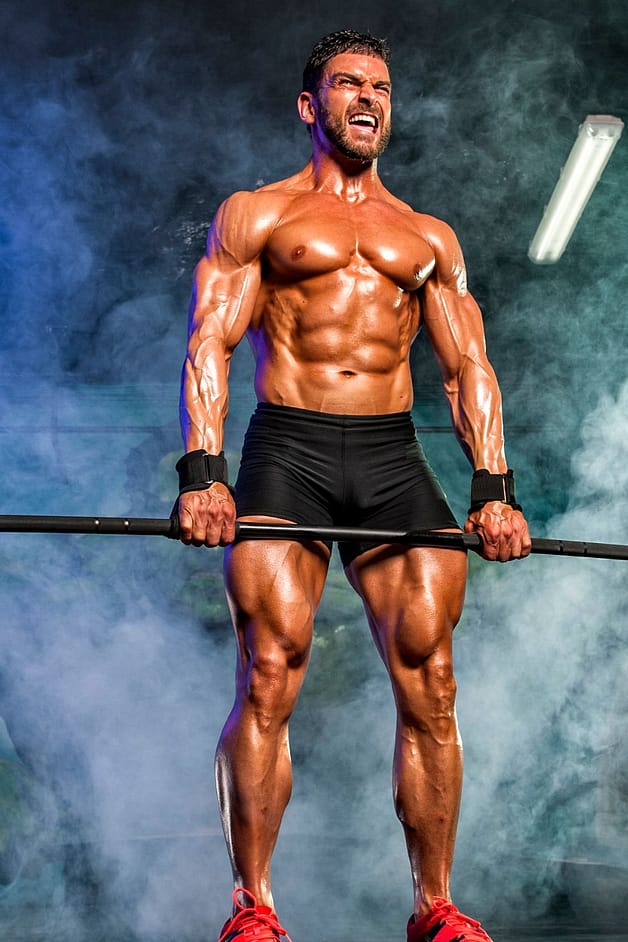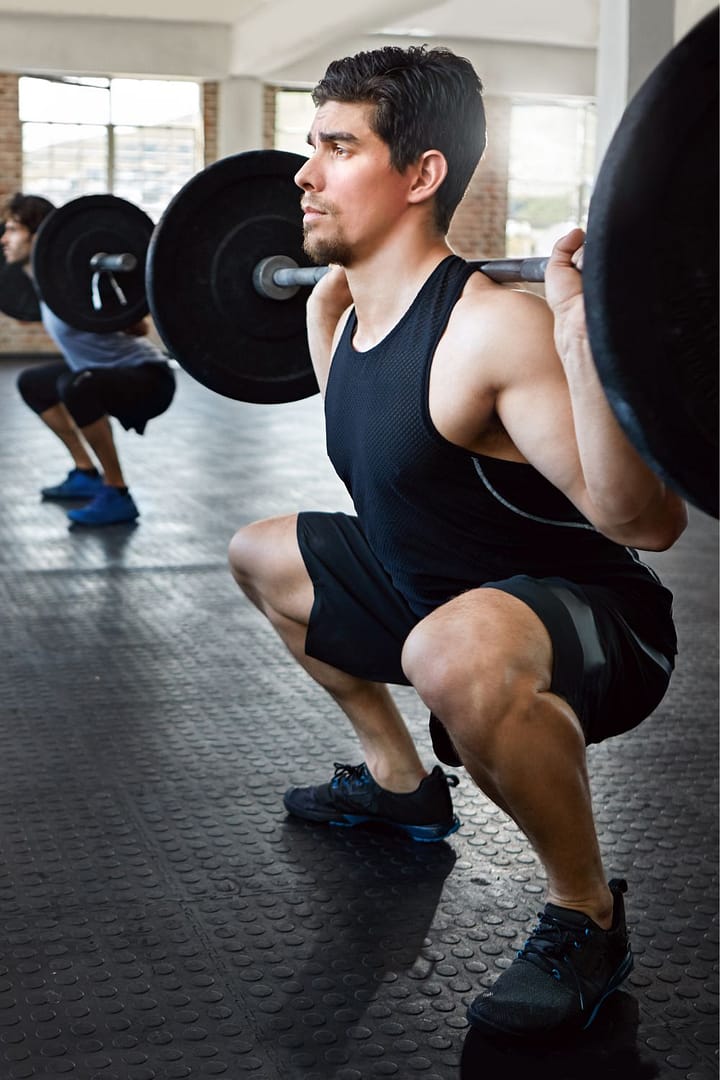Incorporating squats and deadlifts into your routine every day can yield great benefits, but it’s crucial to consider recovery and overall muscle development.
Both exercises engage various muscles, including the legs, glutes, and core, among others.
Here are a few points to keep in mind:
Muscle Recovery:
Squats and deadlifts intensely engage the lower body muscles. Giving your muscles time to repair and grow is crucial for strength and performance. Overtraining without adequate recovery time may lead to fatigue, decreased performance, or even injury.
Variation and Balanced Training:
While squats and deadlifts are fantastic compound exercises targeting multiple muscle groups, incorporating variety in your workouts can be beneficial. Consider incorporating different leg exercises to ensure all muscle groups are adequately trained. Lunges, leg presses, or hamstring curls are excellent options.
Listen to Your Body:
If you’re feeling overly fatigued, experiencing persistent soreness, or noticing a plateau in progress, it might be a sign that your muscles need more rest. Incorporating rest days or lighter leg-focused workouts can aid in recovery and prevent burnout.
Considering these factors, it’s generally advisable to have specific days dedicated to legs rather than doing squats and deadlifts daily. This allows for adequate recovery and a more balanced training approach. You might structure your routine to have dedicated leg days while still incorporating squats and deadlifts on other training days but at a lower volume or intensity.
Ultimately, it’s crucial to find a routine that works for you. Balance is key, so consider consulting with a fitness professional or personal trainer to design a workout plan tailored to your goals and abilities.

Moving forward
Importance of Specific Leg Days:
1. Recovery and Growth:
Dedicated leg days provide your muscles with focused recovery time. After intense workouts like squats and deadlifts, your muscles need time to repair and grow stronger. By allowing rest days between these workouts, you optimize muscle recovery, which is essential for progress.
2. Targeted Training:
While squats and deadlifts engage various muscles in the lower body, other leg muscles might not receive the same level of stimulation. Having specific leg days enables you to incorporate exercises that target specific muscle groups, such as hamstrings, quadriceps, calves, and glutes. This comprehensive approach fosters balanced muscle development.
Structuring Your Workout Routine:
Consider a workout split that integrates squats and deadlifts effectively while ensuring proper recovery:
Day 1: Squats and Deadlifts
- Start your week with a session focused on squats and deadlifts.
- Begin with compound movements, such as barbell squats and deadlifts, to target multiple muscle groups.
- Follow these with accessory exercises like lunges, leg presses, or hamstring curls to further target specific muscle groups.
Day 2: Active Recovery or Light Leg Day
- Engage in active recovery or a lighter leg workout. This could include activities like cycling, walking, or yoga to promote blood flow and aid in muscle recovery.
Day 3: Leg Emphasis
- Incorporate another leg-focused day in your routine. Include exercises that isolate specific leg muscles to ensure comprehensive training.
Day 4: Rest or Full Body Workout
- Take a rest day or opt for a full-body workout routine that engages various muscle groups without specifically targeting legs.
Adapt your routine based on how your body responds. If you feel excessively fatigued or notice persistent soreness, consider adjusting the intensity, volume, or frequency of your workouts. Adequate nutrition, hydration, and sleep are also vital for optimal recovery and performance.
Conclusion:
Incorporating squats and deadlifts into your routine is highly beneficial, but structuring your workouts to include specific leg days allows for targeted training and optimal recovery. This approach ensures balanced development and reduces the risk of overtraining or injury. Remember, finding the right balance for your body is key to a successful and sustainable workout routine.
A comparison tabular on this
Here’s a comparison table outlining the differences between incorporating squats and deadlifts every day versus having specific leg days within your workout routine:
| Aspect | Squats and Deadlifts Every Day | Specific Leg Days |
|---|---|---|
| Muscle Recovery | Limited time for recovery, potential risk of overtraining or fatigue | Allows dedicated rest and recovery for targeted muscles |
| Muscle Stimulation | Engages multiple muscle groups efficiently but may neglect specific leg muscles | Allows targeted exercises for comprehensive leg muscle development |
| Training Variation | Less variety in exercises, potentially limiting overall muscle growth | Enables inclusion of various leg exercises for balanced development |
| Risk of Injury | Increased risk due to repetitive stress on muscles without adequate rest | Reduces risk by providing recovery time between intense workouts |
| Progress and Growth | Potential plateau in progress due to limited recovery time | Optimizes growth and progress through focused training and recovery |
| Overall Performance | May lead to decreased performance and burnout over time | Supports consistent performance and improvement by allowing recovery |
This comparison highlights the importance of structuring your workout routine to include specific leg days for optimal muscle recovery, balanced training, and sustained progress while reducing the risk of overtraining or injury.
Final words
Absolutely! When it comes to designing your workout routine, balance and consistency are key. Incorporating squats and deadlifts into your regimen is fantastic for overall strength and muscle development. However, ensuring adequate recovery time for your muscles through specific leg days is equally crucial.
By structuring your workouts to include dedicated leg days, you’ll not only optimize muscle recovery but also target specific leg muscles more comprehensively. This approach fosters balanced growth, reduces the risk of overtraining, and promotes long-term progress.
Listen to your body, adapt your routine accordingly, and remember that a well-rounded approach to training is essential. Finding the right balance between intensity, variety, and recovery will help you achieve your fitness goals effectively and sustainably. Cheers to a strong and balanced workout routine.

Hey there, it’s Mike Rrsq, the Editor-in-Chief over at Jsquat.com, and I’m absolutely obsessed with all things squat fitness! I’ve been lucky enough to get some serious recognition for my work in this field. With a solid background in the fitness and wellness industry, I’ve been there right from the get-go, helping shape this website into what it is today.
You see, I’m not just the boss around here; I’m also a passionate contributor. I love sharing my insights through my articles, and trust me, they’re not your run-of-the-mill stuff. Each piece I write is a labor of love, filled with my expertise and real-world experience in the fitness universe. So, if you’re into fitness and looking for some inspiration, you’re in the right place!


